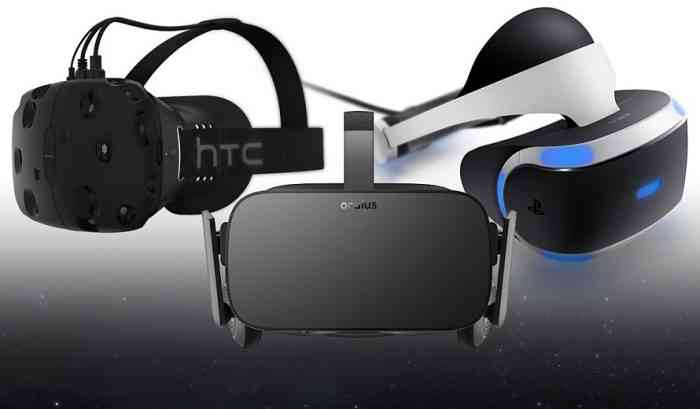
In the realm of technological advancement, few innovations have captivated humanity’s collective imagination quite like virtual reality. Popularly referred to as VR, virtual reality transports us to artificial 3D visual or other sensory worlds that deliver fantastical experiences. VR immerses the user into a computer-generated experience that simulates reality using interactive devices like headsets, goggles, gloves, joysticks, and body suits.
In a typical virtual reality setting, the user wears a helmet fitted with a stereoscopic screen and views animated 3D images of a simulated world stitched together to create a new reality. Telepresence (the illusion of being there) is achieved by motion sensors that detect the user’s movements and adjust the simulated view accordingly in real time.
While virtual reality has blossomed into a transformative force in gaming, it is still a long-awaited promise in the online gambling world. Even so, the technology is predicted to have a bright future in the niche, and all it needs is a push in the right direction to kick-start a domino effect. Currently, only a few casinos, such as SlotsMillion, JackpotVR, and Social Club VR, play with the tech. As the number of people adopting VR grows, so will the popularity of such platforms.
Virtual reality’s expansive use in gaming creates truly immersive experiences that bridge the gap between real and digital spaces. Join us on a journey delving into the fascinating domain of virtual reality as a technological niche concept reshaping the gaming industry.
The Technological Leaps of VR in Gaming
Virtual reality has evolved from humble origins rooted in academic research and early federal government experiments and blossomed into a transformative source. As virtual reality continues to mature, it offers a vast range of immersive experiences with an unparalleled level of entertainment that traditional gaming cannot match. Here are some of the technological advancements that help it achieve such a level of immersion:
Enhanced Graphics and Realism
Virtual reality is a transformative technology subject to the leaps made in hardware and software development. The headsets available on the market today are far from the rudimentary devices of the past, and the hardware industry continues to push the boundaries of their comfort and accessibility. Simultaneously, software advancements enable the creation of breathtaking landscapes and mind-bending simulations to create increasingly realistic and interactive virtual worlds. Recommended VR headset picks that allow users to step into such dimensions include:
- HP Reverb G2
- Meta Quest Pro
- HTC Vive Pro 2
- Valve Index VR Kit
- Sony PlayStation VR2
- Meta Quest 2
Haptic Feedback and Sensory Integration
VR technology goes beyond visual immersion and includes tactile sensations to enhance gaming experiences. Advanced controllers, joysticks, and other accessories can simulate the sense of touch, allowing gamers to feel the impact of virtual objects like a grenade explosion or the recoil of a gun. Haptic feedback combined with other sensory integration technology like spatial audio blurs the line between the simulated and real world in VR gaming.

Social VR Experiences
Virtual reality has evolved from solitary experiences to social platforms where users can connect. Some multiplayer games allow players to interact with fellow gamers as they battle monsters and experience heart-pounding action in the VR space, fostering a sense of community unlike anything else.
Augmented Reality Integration
The convergence of virtual and augmented reality technologies creates a seamless experience where virtual objects interact with the real world. By blending both disciplines, players can indulge in hybrid gaming experiences that merge the physical elements with virtual overlays, creating new interaction possibilities.
The Future of Virtual Reality Gaming
Innovators in the virtual reality field continue to embrace the concept of constant evolution to push the scope of its influence beyond what is deemed possible. These are some future expectations for the technology that will give rise to even more hybrid experiences:
Full Body Tracking
Introducing full body tracking systems will usher in a new era of sensory immersion. The most accessible kind of VR gaming available is non-immersive, which refers to a 3D simulation accessible through a computer or smartphone screen. The user controls the environment using a mouse or keyboard, but the simulated environment does not interact with the user directly.
On the other hand, fully immersive VR completely immerses the user into the generated 3D world, incorporating sight, sound, touch, and sometimes smell. The user wears special equipment like body suits, gloves, and helmets to interact with the virtual environment fully. The setting may also include treadmills and stationary bikes to sell the experience of moving through the 3D space. Sensors attached to this equipment capture real-world body movements that allow gamers to run, jump, crouch, and other unique actions in the simulated world. While it is in its infancy, this advancement will increase the physicality and freedom of movement in VR gaming.
Brain-Computer Interfaces (BCI)
This technology allows direct interaction between the brain and computers, which would be revolutionary for VR gaming. By detecting a gamer’s brain activity, the technology can control virtual actions from thoughts, opening the door for more immersive gameplay experiences.
Closing Thoughts
The future of virtual reality in gaming and other disciplines appears boundless. Software and hardware innovation, coupled with our collective imagination, is bound to usher in a new era of human experience with VR at the helm. And in the ever-expanding universe of gaming, the possibilities of virtual reality use in the domain are only limited by the depths of human creativity.